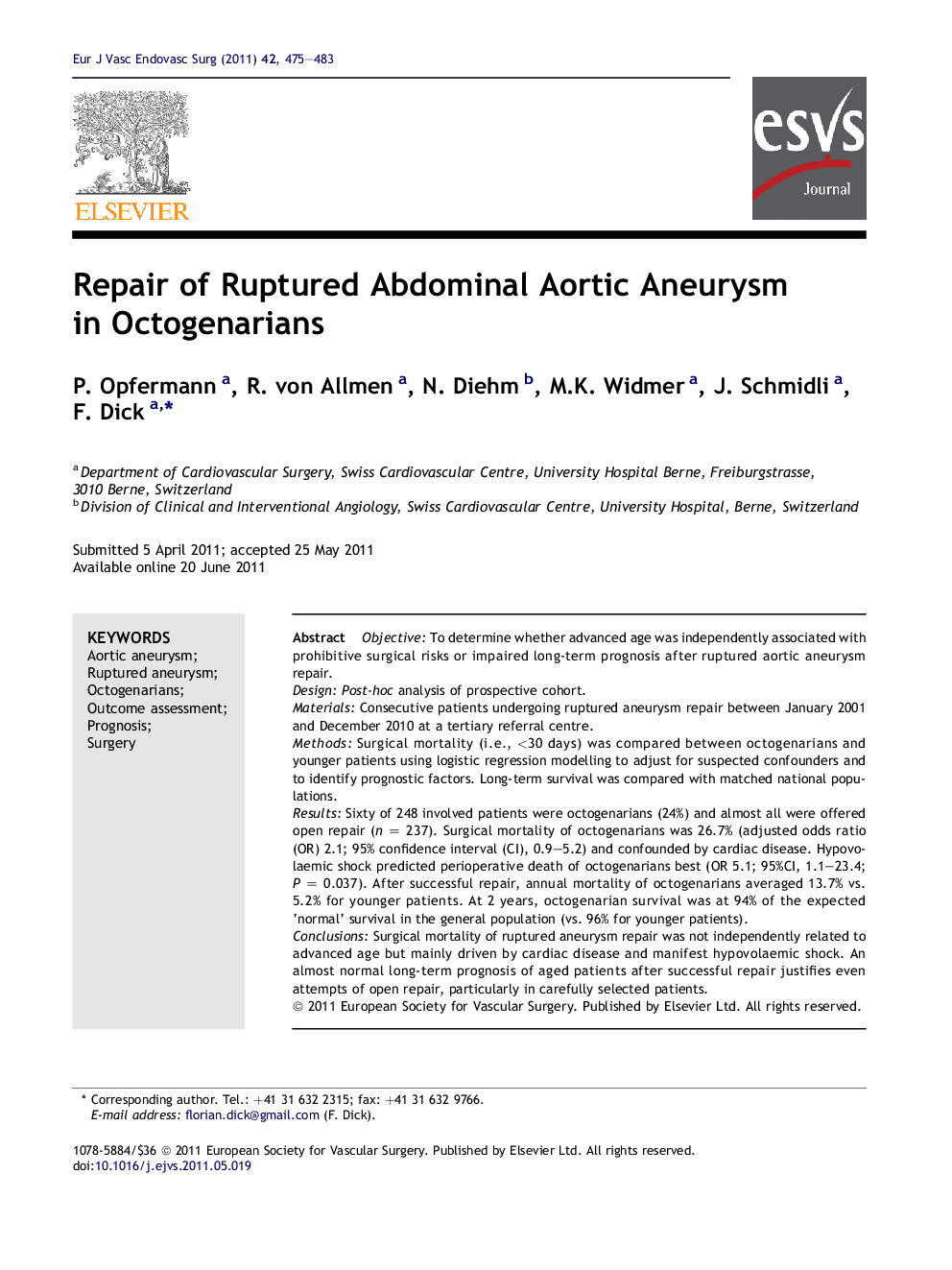| Article ID | Journal | Published Year | Pages | File Type |
|---|---|---|---|---|
| 2913093 | European Journal of Vascular and Endovascular Surgery | 2011 | 9 Pages |
ObjectiveTo determine whether advanced age was independently associated with prohibitive surgical risks or impaired long-term prognosis after ruptured aortic aneurysm repair.DesignPost-hoc analysis of prospective cohort.MaterialsConsecutive patients undergoing ruptured aneurysm repair between January 2001 and December 2010 at a tertiary referral centre.MethodsSurgical mortality (i.e., <30 days) was compared between octogenarians and younger patients using logistic regression modelling to adjust for suspected confounders and to identify prognostic factors. Long-term survival was compared with matched national populations.ResultsSixty of 248 involved patients were octogenarians (24%) and almost all were offered open repair (n = 237). Surgical mortality of octogenarians was 26.7% (adjusted odds ratio (OR) 2.1; 95% confidence interval (CI), 0.9–5.2) and confounded by cardiac disease. Hypovolaemic shock predicted perioperative death of octogenarians best (OR 5.1; 95%CI, 1.1–23.4; P = 0.037). After successful repair, annual mortality of octogenarians averaged 13.7% vs. 5.2% for younger patients. At 2 years, octogenarian survival was at 94% of the expected ‘normal’ survival in the general population (vs. 96% for younger patients).ConclusionsSurgical mortality of ruptured aneurysm repair was not independently related to advanced age but mainly driven by cardiac disease and manifest hypovolaemic shock. An almost normal long-term prognosis of aged patients after successful repair justifies even attempts of open repair, particularly in carefully selected patients.
